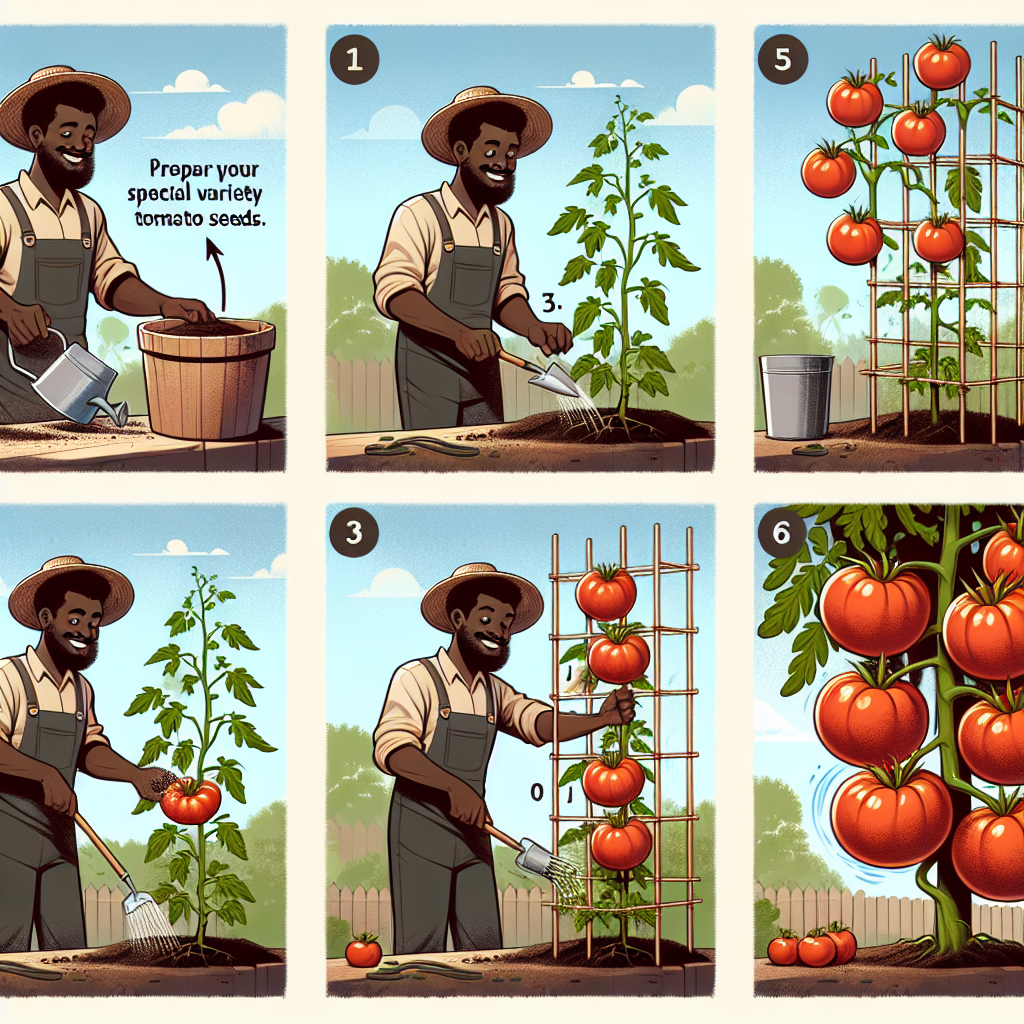
How to grow giant tomatoes
How to Cultivate Giant Tomatoes: A Gardener’s Guide
For many gardening enthusiasts, growing tomatoes isn't just about having fresh produce at the dinner table—it's a personal challenge to produce the biggest, juiciest specimens possible. If you're ready to dive into the world of gigantic tomatoes, then you’ve come to the right place. This article will provide you with valuable tips and techniques on how to grow giant tomatoes that will leave your friends and family in awe!
The Basics of Giant Tomato Growth
Before we dive into the specifics, let’s first discuss the basic requirements for cultivating tomatoes. To grow any variety of tomato, you must understand their need for sunlight, water, and the right soil type.
- Sunlight: Tomatoes thrive in sunny locations, requiring at least 6-8 hours of direct sunlight daily.
- Watering: Consistent and adequate watering is crucial but avoid overwatering to prevent root rot.
- Soil Quality: Tomatoes prefer rich, well-draining soil with a pH between 6.0 and 6.8.
Choosing the Right Tomato Varieties
When your goal is to grow giant tomatoes, starting off with the right variety is essential. Certain tomato types are bred specifically for size, and selecting these can significantly increase your chances of success.
- Brandywine: Known for its large, beefsteak-type fruit.
- Pineapple: Produces yellow and red swirled tomatoes that can reach hefty weights.
- Big Zac: A hybrid that is often touted for its potential to grow tomatoes over 5 pounds.
- Cherokee Purple: These heirloom tomatoes are not only sweet but can also grow large.
Essential Techniques for Growing Giant Tomatoes
Now that you have the basic requirements and the right varieties, let’s discuss essential techniques that will help you successfully grow these impressive fruits.
Soil Preparation
To grow giant tomatoes effectively, soil preparation is where the journey begins. Ensuring your soil is nutrient-rich will give your plants a solid foundation to thrive.
- Testing Soil: Start by testing your soil's pH and nutrient levels.
- Amending Soil: Based on the results, add compost or well-rotted manure to enhance soil quality.
- Drainage: Ensure good drainage by adding organic matter if your soil is too compact or clay-heavy.
Watering Practices
Watering is a critical aspect of tomato cultivation. The goal should be to keep the soil consistently moist—neither too dry nor waterlogged.
- Frequency: Water deeply once or twice a week, adjusting based on climate conditions.
- Timing: Water early in the morning to reduce evaporation rates.
- Mulching: Use organic mulch to retain moisture and regulate soil temperature.
Fertilizing for Growth
Fertilizing can significantly impact the growth of your giant tomatoes. Understanding the nutritional needs of your plants can help you optimize growth.
- Early Growth: Use a balanced fertilizer in early growth stages (high in nitrogen).
- Flowering Stage: Switch to a fertilizer richer in phosphorus and potassium to encourage fruit development.
- Organic Options: Consider using organic fertilizers like bone meal or fish emulsion for consistent nutrient delivery.
Supporting Your Tomato Plants
As your tomato plants grow taller and heavier with potential giant fruit, they will need proper support to thrive efficiently.
- Caging: Use sturdy cages or stakes to prevent plants from falling over.
- Pruning: Regularly prune suckers and excess foliage to focus the plant’s energy on producing fruit.
- Spacing: Ensuring adequate spacing (at least 2-3 feet apart) allows plants to grow without competing for resources.
Controlling Pests and Diseases
Keeping your tomato plants healthy is crucial for growing giant fruit. Pests and diseases can thwart your efforts, so vigilance is key.
- Pest Management: Regularly inspect plants for common pests like aphids, whiteflies, and hornworms.
- Disease Prevention: Practice crop rotation and remove any infected plants immediately.
- Natural Remedies: Use neem oil or insecticidal soap as safe pest control methods.
Harvesting Your Giant Tomatoes
Finally, the moment of truth arrives when you get to harvest your giant tomatoes. Timing your harvest is important in ensuring peak flavor.
- Color Change: Harvest when the tomatoes turn their mature color, typically deep red or orange, depending on the variety.
- Firmness: Gently squeeze to check for firmness; ripe tomatoes should yield slightly to pressure.
- Cut, Don’t Pull: Use garden shears to cut the stem rather than pulling them off, which can damage the plant.
Final Thoughts on Cultivating Giant Tomatoes
Growing giant tomatoes is no small feat, but with the right techniques, dedication, and a bit of patience, anyone can achieve this remarkable gardening milestone. Remember that it’s not just about the end result but also the enjoyable journey of nurturing your plants and watching them grow. So grab your gardening gear, and start on your adventure to become the proud grower of giant tomatoes!
“Success is the sum of small efforts, repeated day in and day out.” – Robert Collier
Resources for Further Learning
If you're eager to expand your knowledge and refine your skills in growing giant tomatoes, consider exploring the following resources:
- Books: Look for specialized literature on tomato varieties and advanced gardening techniques.
- Online Forums: Join online gardening communities to share experiences and tips.
- Local Gardening Clubs: Participate in local clubs for hands-on workshops and shared knowledge.
Now that you have the tools and resources, it’s time to put your knowledge into action and experience the joy of growing giant tomatoes in your own garden!
By Guest, Published on August 25th, 2024